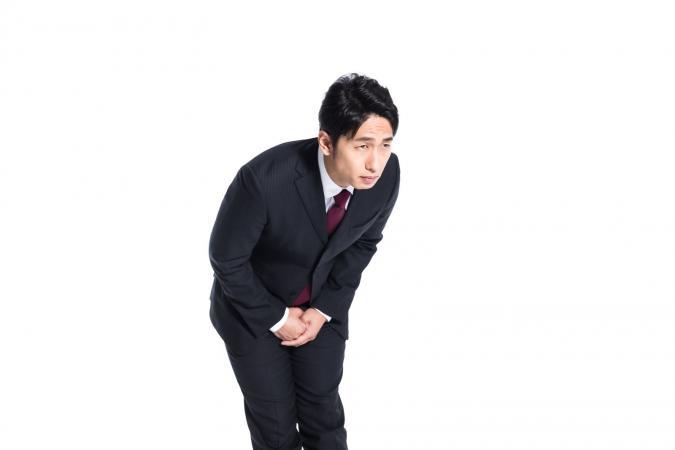
The phrase “Yoroshiku Onegaishimasu” (よろしくお願いします) has no set English translation but is used frequently in Japanese daily life. If you spend enough time in Japan, you’ll soon see that this phrase is up there with “Hello” and “Goodbye” in regard to common usage. Therefore, in this article, we’ll be breaking down this important expression to teach you what it means and when to say it.
Bạn đang xem: Yoroshiku là gì
よろしくおねがいします。Yoroshiku onegai shimasuPlease be nice to me!Thank you very much.

Japanese Useful Phrase: Yoroshiku Onegaishimasu

Learn Japanese Online with gocnhintangphat.com
Contents3 What Does “Yoroshiku Onegaishimasu” Mean (Not Literally)?6 Learn Japanese online with gocnhintangphat.com?
Japanese Useful Phrase: Yoroshiku Onegaishimasu
This phrase has no good English translation, but it is used all the time in Japanese. You’ll literally be using this phrase every day if you decide to move to Japan. So in this article, we’ll break down this phrase so you know exactly what you’re saying and exactly when to say it.
What Does “Yoroshiku Onegaishimasu” Mean (Literally)?
Let’s look at the grammar first. The initial part comes from the word “yoroshii” (宜しい), which is an adjective meaning “good, alright, very well.” It’s a more formal version of the word “yoi” (良い), which also means “good.”
Changing the “i” at the end of “yoroshii” to a “ku” creates “yoroshiku,” which is the adverb form of “yoroshii.” The English adverb “well” is similar in this sense.
The second part of the phrase is not as complicated as you might think. The main verb used is “negau” (願う), which means “to request, to implore.” Negau can also mean “to ask,” or “to hope” when used in formal situations. Wow, that’s a lot of meanings for one word! No wonder it’s so difficult to translate it into English!
To get “onegaishimasu,” you take the negau verb and change it into the -masu form. This is done by removing the final hiragana character “u” (う) and replacing it with “i” (い). After that, you would normally add “masu,” but we don’t need to in this situation. Instead, we just leave it in its noun form “negai.”
Next, you add “o-” (お) to the beginning to create onegai. Adding “o” to the beginning of a noun in Japanese adds formality. Lastly, you add the verb “shimasu” (します) to the end, which is a formal conjugation of the verb “suru” (する), meaning “to do.” Therefore, as a result, we have “onegaishimasu,” which is often translated to “I humbly request,” or even just “Please.” Now that you know the meaning of both “yoroshiku” and “onegaishimasu,” it may sound a bit strange putting the two together. If you took the two words literally, you would end up with a translation like “I humbly request to do well,” or perhaps “I ask to do well.” “I hope to do well,” seems to make the most sense, but there is a bit more nuance that comes into play with “Yoroshiku onegaishimasu.”
What Does “Yoroshiku Onegaishimasu” Mean (Not Literally)?
A major part of understanding Japanese is knowing that context is as important—if not more—as the actual words used. Let’s take a look at some situations that, based on the context, would change the meaning of the phrase.
One common situation that calls for a “Yoroshiku onegaishimasu” is during a business exchange, where the two parties are introducing themselves for the first time.
Xem thêm: Terrific Là Gì – Terrific In Vietnamese
Let’s say a Japanese person (let’s call him Mr. Salesman) works for a tire company and wants to sell tires to the Toyota company. He will arrange a meeting with one of the managers (Mr. Manager), and the two will meet in Mr. Manager’s office. When Mr. Salesman arrives, the first thing he’ll do is introduce himself by saying his name and what company he works for. He will then present Mr. Manager with his business card and at the same time bow and say “Yoroshiku onegaishimasu.”
Judging by this context, we can translate the phrase to something like, “Please treat me kindly,” or “I hope our future business relations go well.” Mr. Salesman wants his meeting with Mr. Manager to be a success and hopefully get a Grade A lifelong customer out of the deal. Therefore, he is expressing this wish to Mr. Manager by saying “Yoroshiku onegaishimasu.” In English, I guess you could say, “I really hope you buy my product,” but in accordance with western culture, that would come off as a bit overkill, so we don’t say it. However, this is a common expression in Japan and is used in this type of situation every single time without fail. You would come off as rude or indifferent if you didn’t say it.
Another situation in which “Yoroshiku onegaishimasu” is used is at the end of a self-introduction (jiko shoukai, 自己紹介).
Let’s say it’s your first day at a new job in Japan. You walk through the glass front doors looking all professional wearing your suit and carrying a briefcase. Some other people wearing suits greet you in the hallway, but you haven’t been formally introduced to any of them yet. Later, once your supervisor has shown you to your desk and you have a chance to get situated, it’s time for the morning meeting.
Everyone gathers in the meeting room around the manager, some people make announcements, and, finally, it’s time for you to give your self-introduction. You tell them your name, where you’re from, and that you’re proud to be working for such a fine company. Once you’re finished, you bow and say, “Yoroshiku onegaishimasu.”
In this context, “Yoroshiku onegaishimasu” would translate to something like, “I hope you will treat me well as your new co-worker/employee.” It’s a way of expressing that you hope for something good and long-lasting to come of this experience.
Xem thêm: Tequila Là Gì ? Khám Phá Công Thức Pha Chế Với Rượu Tequila Tequila Là Gì
On top of that, your new co-workers will return your “Yoroshiku onegaishimasu” with their own. This is because they also want you as a new employee to be hardworking, a good team player, and a positive addition to the company. They want your working there to be a good experience for them and for the relationship to last into the future.
Chuyên mục: Định Nghĩa







